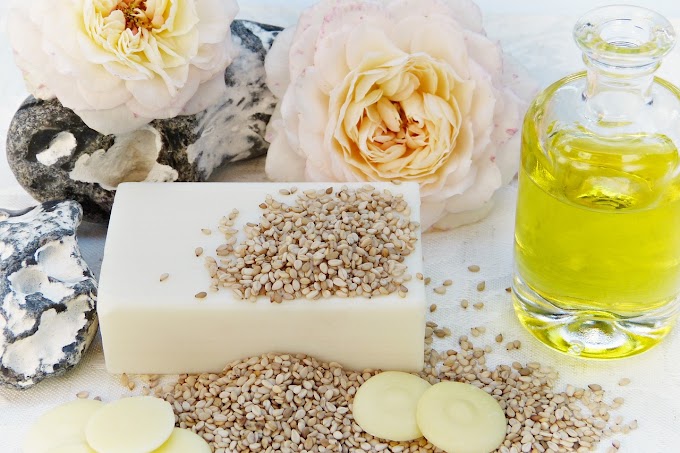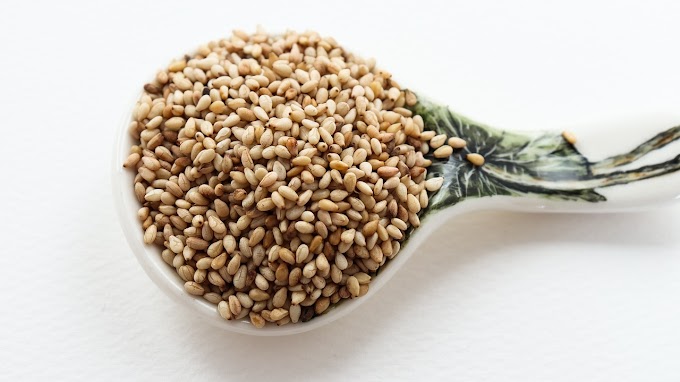Ayurvedic Massage and Body Therapies
Introduction
Marked by constant pressures and demands, the ancient tradition of Ayurvedic massage stands as a soothing balm for both the body and soul. Rooted in the ancient Indian system of holistic healing, Ayurvedic massage, or "Abhyanga," combines the wisdom of Ayurveda with the healing touch of massage therapy. In this comprehensive guide, we delve into the history, types, benefits, and practical tips for experiencing the rejuvenating magic of Ayurvedic massage.
Ayurvedic Massage and Body Therapies
The History of Ayurvedic Massage: With its origins dating back over 5,000 years in India, Ayurvedic massage holds a significant place in Ayurveda, the ancient system of holistic healing. The term "Ayurveda" itself translates to "the science of life," highlighting the practice's emphasis on balancing the mind, body, and soul. Early Ayurvedic texts like the Charaka Samhita and the Sushruta Samhita outline the techniques and benefits of Ayurvedic massage, cementing its historical significance.Ayurvedic Massage Techniques: Ayurvedic massage techniques emphasize the use of specific strokes, pressure points, and customized herbal oils to create a deeply therapeutic experience. The rhythmic and gentle strokes aim to stimulate the flow of energy throughout the body, promoting relaxation and balancing the doshas. Ayurvedic massage therapists are trained to identify the specific needs of each individual and adapt their techniques accordingly, ensuring a personalized and effective treatment.
Herbal Oils in Ayurvedic Massage: The use of herbal oils is integral to Ayurvedic massage therapy. These oils, often infused with a blend of medicinal herbs and natural ingredients, are carefully selected to address specific imbalances and promote overall well-being. The choice of oil depends on individual dosha types and any prevailing health concerns. The warm herbal oils used in Ayurvedic massage penetrate deep into the tissues, nourishing the skin, relaxing the muscles, and promoting detoxification.
Balancing the Doshas: Ayurvedic massage focuses on balancing the three doshas—Vata, Pitta, and Kapha—within the body. According to Ayurvedic philosophy, an imbalance in these doshas can lead to various physical and mental ailments. Through the application of specific techniques and herbal oils, Ayurvedic massage aims to harmonize the doshas, promoting overall health and well-being. The therapist assesses the dominant doshas of the individual and tailors the massage to restore balance and harmony.
Mind-Body-Soul Connection: In Ayurveda, the mind, body, and soul are considered interconnected and integral to overall health. Ayurvedic massage not only addresses physical discomfort but also seeks to create a sense of emotional and spiritual well-being. By promoting relaxation, stress reduction, and emotional balance, Ayurvedic massage encourages a holistic approach to healing, nurturing a profound sense of harmony and inner peace.
The Philosophy of Energy Channels (Srotas): Ayurvedic massage is based on the concept of energy channels, known as srotas, which regulate the flow of vital energy throughout the body. By applying gentle pressure and specific strokes along these energy channels, the massage aims to release any blockages and restore the natural flow of energy. This helps to enhance the body's natural healing abilities and promote a sense of holistic rejuvenation.
Other Ayurvedic Practices: Ayurvedic massage is often integrated with other Ayurvedic practices, such as dietary recommendations, herbal treatments, yoga, and meditation. This holistic approach aims to create a comprehensive wellness regimen tailored to individual needs, promoting long-term health and vitality. The integration of multiple Ayurvedic practices enhances the overall effectiveness of the treatment, fostering a balanced and harmonious lifestyle.
Abhyanga: A full-body massage utilizing warm, herb-infused oils, aimed at balancing the doshas (Vata, Pitta, and Kapha), improving circulation, and promoting relaxation.
Pizhichil: This treatment involves a continuous stream of warm herbal oil poured over the body by two therapists simultaneously, particularly effective for muscle and joint issues.
Shirodhara: A calming therapy that entails a continuous stream of warm oil over the forehead, promoting deep relaxation and mental clarity.
Udvartana: A vigorous exfoliating massage employing herbal powders or pastes, excellent for detoxification and enhancing skin texture.

The Benefits of Ayurvedic Massage
Ayurvedic massage offers numerous physical and mental benefits. Some specific advantages include:
Stress Reduction: Known for its ability to alleviate stress and anxiety by calming the nervous system.
Pain Relief: Providing relief from chronic conditions like arthritis or back pain.
Enhanced Sleep: Regular sessions can improve sleep patterns and aid with insomnia.
Improved Digestion: Ayurvedic massage aids digestion by stimulating the digestive fire or "agni."
Detoxification: Panchakarma treatments, often incorporating Ayurvedic massage, facilitate the removal of toxins from the body.
Finding a Qualified Ayurvedic Massage Therapist: When seeking an Ayurvedic massage therapist, it is crucial to ensure they are well-trained and experienced. Here are some tips:
Certification: Look for therapists certified in Ayurvedic massage from reputable institutions.
Experience: Inquire about years of experience and research customer testimonials.
Consultation: A qualified therapist should conduct a thorough consultation to understand your specific needs and imbalances.
What to Expect During an Ayurvedic Massage: Before your session, your therapist will discuss your particular concerns and preferences. During the massage, you can expect:
* A calm and warm ambiance.
* Use of personalized herbal oils.
* Gentle, rhythmic strokes targeting energy points.
* Focus on your unique dosha imbalance.
Tips for Maximizing the Benefits of Your Ayurvedic Massage: To maximize the benefits of your Ayurvedic massage, consider the following tips:
Arrive Early: Arriving a little early allows you to relax and prepare mentally.
Stay Hydrated: Drink plenty of water after your massage to aid in the detoxification process.
Rest: Rest after the session to allow the healing effects to fully integrate into your body.
Regular Sessions: For long-term benefits, consider regular Ayurvedic massage sessions.
Conclusion: Ayurvedic massage is not merely a spa treatment; it represents a holistic approach to well-being that has withstood the test of time. By deeply understanding your unique constitution and imbalances, Ayurvedic massage offers a path to physical, mental, and spiritual harmony. So, if you seek relaxation, healing, and rejuvenation, consider embracing this ancient art and embark on a journey towards balance and vitality.
FAQ's
What is Ayurvedic massage?Ayurvedic massage, also known as Abhyanga, is an ancient Indian practice that combines massage therapy with the principles of Ayurveda, the holistic healing system. It involves the use of warm herbal oils and specific techniques to balance the doshas and promote overall well-being.
How long does an Ayurvedic massage session typically last?
How long does an Ayurvedic massage session typically last?
The duration of an Ayurvedic massage session can vary, but it usually lasts around 60 to 90 minutes. Some specialized treatments like Pizhichil or Shirodhara might take longer due to their unique techniques.
Can Ayurvedic massage help with specific health conditions?
Can Ayurvedic massage help with specific health conditions?
Yes, Ayurvedic massage can be beneficial for various health conditions. It can provide relief from stress, anxiety, pain, and sleep issues. It is also used to support digestion, detoxification, and overall rejuvenation.
How often should I get an Ayurvedic massage?
How often should I get an Ayurvedic massage?
The frequency of Ayurvedic massage depends on your individual needs and imbalances. Generally, a weekly session can be beneficial, but your Ayurvedic practitioner will guide you to the ideal frequency based on your constitution and goals.
Can I get an Ayurvedic massage if I'm not familiar with Ayurveda?
Can I get an Ayurvedic massage if I'm not familiar with Ayurveda?
Absolutely. You do not need prior knowledge of Ayurveda to enjoy the benefits of Ayurvedic massage. Your therapist will assess your dosha balance and tailor the massage to suit your needs.
Is Ayurvedic massage suitable for everyone?
Is Ayurvedic massage suitable for everyone?
Ayurvedic massage is generally safe for most individuals. However, if you have specific medical conditions, or allergies, or are pregnant, it's essential to inform your therapist beforehand so they can customize the treatment accordingly.
What should I wear during an Ayurvedic massage?
What should I wear during an Ayurvedic massage?
You will typically be provided with disposable undergarments or towels to wear during the massage. The therapist will ensure your modesty is respected while also allowing the application of herbal oils to the body.
Are there any side effects of Ayurvedic massage?
Are there any side effects of Ayurvedic massage?
When performed by a trained therapist, Ayurvedic massage is gentle and generally free from major side effects. However, some people might experience mild detoxification effects, such as a slight headache or fatigue, which should subside within a day.
Can I combine Ayurvedic massage with other Ayurvedic treatments?
Can I combine Ayurvedic massage with other Ayurvedic treatments?
Yes, Ayurvedic massage is a regular part of a broader holistic treatment plan. Combining it with other Ayurvedic treatments like dietary adjustments, herbal remedies, and yoga can enhance the overall benefits and promote better results.
How do I maintain the benefits of Ayurvedic massage at home?
How do I maintain the benefits of Ayurvedic massage at home?
Your therapist may recommend self-massage techniques, known as "self-abhyanga," which you can perform at home using Ayurvedic oils. Additionally, following Ayurvedic dietary guidelines and practicing relaxation techniques can help maintain the benefits between sessions.
Remember, Ayurvedic massage is a personalized experience, and your therapist will address any questions or concerns you have before, during, and after your session. Always communicate openly with your therapist to ensure a safe and enjoyable experience.
Remember, Ayurvedic massage is a personalized experience, and your therapist will address any questions or concerns you have before, during, and after your session. Always communicate openly with your therapist to ensure a safe and enjoyable experience.







